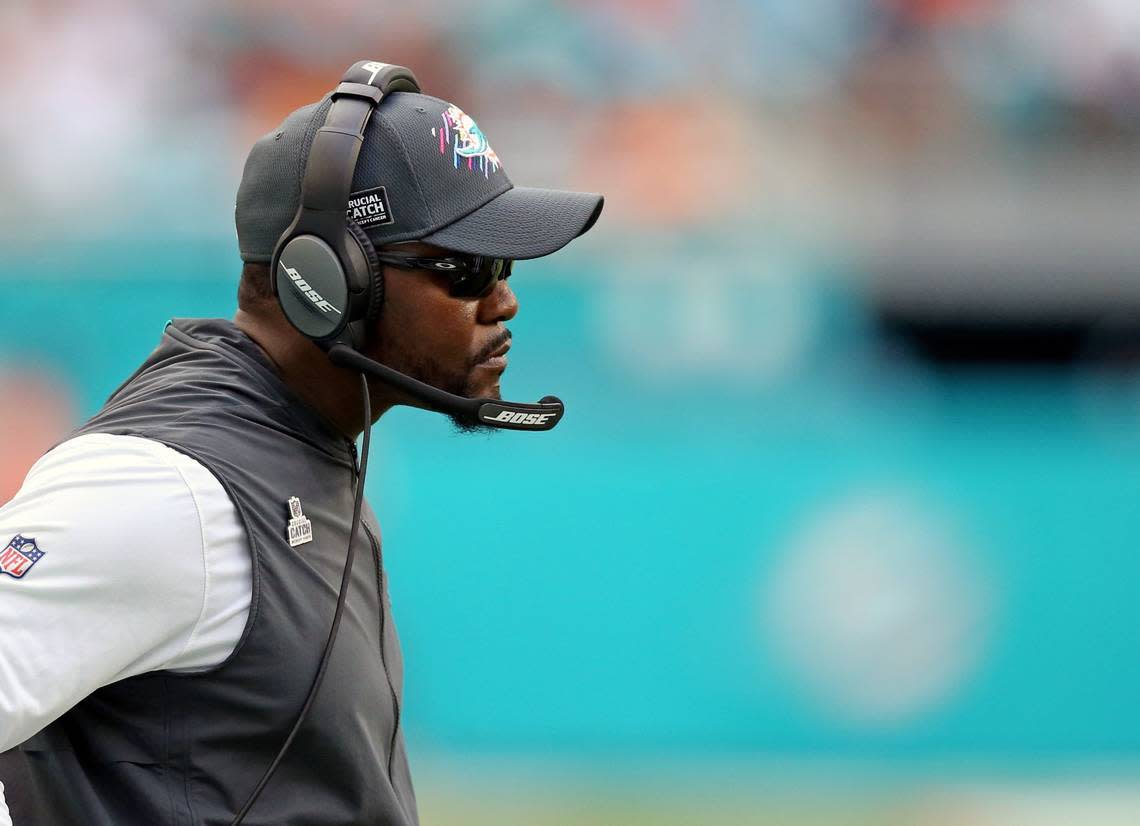The 44 Percent: Queen Elizabeth II, Puerto Rico and the migrants shipped up north
In the aftermath of Queen Elizabeth II’s death, I wanted to see how South Florida’s Black community, many of whom are Caribbean, viewed the royal family.
I asked teachers. I asked activists. I asked a museum director. What I found was a generational divide: the younger people mainly saw the monarchy as a vestige of Britain’s colonial past while at least one of their parents or grandparents has fond memories of the crown. Such an affectionate view of the royal family is one of the greatest consequences of colonialism, according to climate justice advocate Nayshma Jones.
“It’s not just a political and economic system. It’s not just a social system,” said Jones, whose parents came from Jamaica. “It gets into the psychology of all of its participants and colonialism works best when the people who are colonized are assimilated so much that they identify with their colonizer or their country of origin or their involuntary country of placement.”

Some pointed to Kenya’s Mau Mau rebellion, an anti-colonialism uprising that began in 1952 — the same year that Queen Elizabeth assumed the throne — where the British executed approximately 11,000 Kikuyu people and imprisoned thousands more in concentration camps, as an example of the monarchy-sanctioned atrocities. It should be noted that no one may ever know if the queen was aware as the records were destroyed because it “might embarrass Her Majesty’s government,” Harvard history professor Maya Jasanoff wrote in The New York Times.
That’s not to say everyone shared that feeling. A Daily Mail editorial outlines many issues with The New York Times’ coverage of Queen Elizabeth’s death, including Jasanoff’s column. Similarly, parents such as Simone Russell’s Jamaican mother, felt empowered by seeing a queen when many women weren’t in leadership — despite her daughter’s very anti-colonial stance.
“She’s not a feminist icon,” said Russell, a Jamaica-born educator in Broward.
One of the conclusions of The Atlantic’s Helen Lewis’ piece entitled “What the Queen’s Funeral Taught Me About Britain,” was that there’s a beauty in its “respect for duty and sacrifice” (Lewis did acknowledge “the unaddressed legacy of colonialism”). Still, many of the people I interviewed suggested it’s worth questioning why these traditions exist and who do they really serve.
Queen Elizabeth had “a diamond in her crown that’s worth $400 million,” said Roots Collective co-founder Danny Agnew. “It’s the largest diamond in the world. If this new king really wants to shift the narrative about the monarchy, give that back and give back all the treasures and stuff that you stole from all across the planet that helped build your wealth because you can’t give back the Black bodies you stole.”
INSIDE THE 305

Tears for beloved ‘Miss Liz,’ 85. Shot dead, holding her walker, in her Liberty City yard:
To the woman who was a Liberty City staple since the 1970s. To the woman who was an avid music lover. To the woman who was apparently friends with Muhammad Ali.
Elizabeth Level, or Miss Liz as she was affectionately called, was shot and killed Sept. 9 in front of her Liberty City home. She was 85. Friends and family alike described her as someone who took care of the community as a whole, checking on people and taking in anyone in need. At a gathering last week, Level’s granddaughter Griselda Bee described the scene as “a microcosm of her grandmother’s life.”
There were so many people at one point, it seemed like a street party. Babies were in strollers. Teens dressed up. Young adults pulled up in souped up cars. Seniors Level’s age held candles in tribute.
Under that mahogany tree Level visited each day in front of her home were candles and teddy bears, flowers and the name Miss Liz spelled out with large white beads. A mother showed it to her child. Drinks were flowing.
As of Thursday, no arrests have been made.
OUTSIDE THE 305

How the NFL discriminates against Black coaches:
“The NFL doesn’t have a diversity problem. The NFL has a Black problem.”
Those words, courtesy of former Jets and Bills defensive coordinator Dennis Thurman, essentially sum up The Washington Post’s findings published Wednesday. Featuring interviews from 16 of 24 living Black head coaches, various assistant coaches and many more, the Post’s conclusion was rather simple: NFL teams don’t value Black coaches the same as their white counterparts.
So just why does this problem persist? And let’s be clear: when only 25 of the 191 coaches hired since 1989 are Black, there is a problem. Well, according to Hall of Fame running back turned Los Angeles Chargers special assistant LaDainian Tomlinson, look no further than the leadership:
“I really think there’s a disconnect [between] the owners and the kind of culture that is Black folks — not understanding the way Black folks communicate, the mannerisms, the expressions. It’s different than someone who looks like them. We hear owners say all the time, ‘Oh, I connected with this [White] candidate because they reminded me of myself.’ If we can’t get past that [mind-set with] coaches who don’t look like you or talk like you or come from the same background, they’ll never get a chance.”

DeSantis sending migrants to Martha’s Vineyard reminiscent of “Reverse Freedom Rides”:
History really does repeat itself.
In the days following the news that Florida Gov. Ron DeSantis shipped Venezeluan migrants to Martha’s Vineyard, The Washington Post published a story about the “Reverse Freedom Rides,” a plot organized by white supremacists to send Black families north in 1962. The story compares DeSantis’ doings to that of the Citizens Councils, groups that advocated for segregation, making the point that the migrants even stayed at the same location as the Black families.
The similarities surrounding the two trips, some 60 years apart, are striking. Just take a look at the opening paragraph:
Eliza Davis was bewildered the day she arrived in a wealthy tourist town on Cape Cod. An agricultural worker, she had been promised work and housing if she took a free trip to another state. Days later, disembarking with her eight children, she had little idea where she was, that a president had a family compound down the road, or that she was a “pawn,” as locals told the New York Times, in a political stunt.
I also wanted to take an opportunity to shoutout my Miami Herald colleagues who’ve been leading the coverage on this issue. Below are a few links if you’re interested in learning more about the situation:
Operatives linked to DeSantis promised to fly migrants to Delaware — but left them stranded
In lawsuit, migrants say DeSantis flights ‘cruelty akin to what they fled in’ Venezuela
Were migrants sent to Martha’s Vineyard given ‘fake addresses’ by DHS? Agency responds

‘Quick response’: How a Puerto Rican town looked after its own after Hurricane Fiona:
Hurricane Fiona hit Puerto Rico Sunday, causing floods and leaving hundreds of thousands of people without electricity or water.
But in Loíza, a town known for its Afro-Latino heritage, community advocates have rallied together to “deal with shortages of food and other immediate needs in a municipality where half the population lives in poverty and where crises have brought hunger,” writes the Miami Herald’s Syra Ortiz-Blanes.
“We know where our elderly, our pregnant women, our women with children are,” said Anabela Fuentes Garcia, a Villa Cristiana community leader and Taller Salud staff member. “Where the highest, safest places are and how to protect ourselves from the force of the sea. We know where our strength is.”
Born out of what many on the island deem insufficient help on the part of the government, grassroots organizations and community members have set up soup kitchens, distributed bottled water and cleared trees to prevent further flooding.
HIGH CULTURE

He produced Kodak Black’s big hit this year. In Miami he announced his plans to rap:
ATL Jacob wants to dominate music.
His producing resume speaks for itself: “Super Gremlin” will be a must-play at South Florida parties for years to come; “WAIT FOR U” was the #1 song in America; and “Nobody Special” gave another Florida rapper one of his most successful tracks to date.
But when we sat down earlier this month prior to him being recognized at BMI R&B/Hip-Hop Awards, ATL Jacob seemed to focus on a new mission: rapping. As you’ll read, the move is actually a longtime coming. And, as multi-platinum producer Polow Da Don told me, it’s actually the best producers who turn into the best artists:
“You don’t find many producers who can have hits just as big as one another — top 100s, crossover records, urban, they basically checked off all the boxes — yet they’re so different from one another.”
Where does “The 44 Percent” name come from? Click here to find out how Miami history influenced the newsletter’s title.
